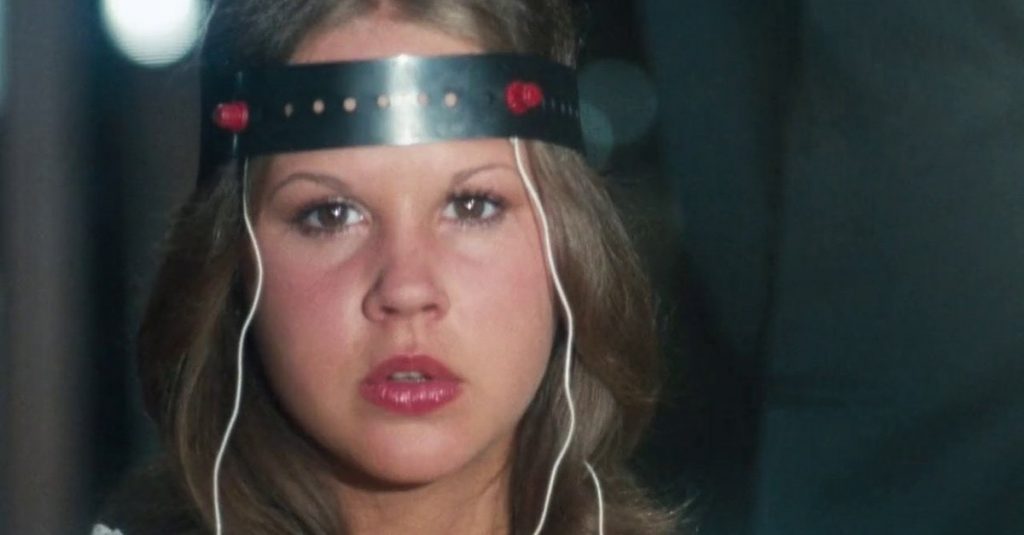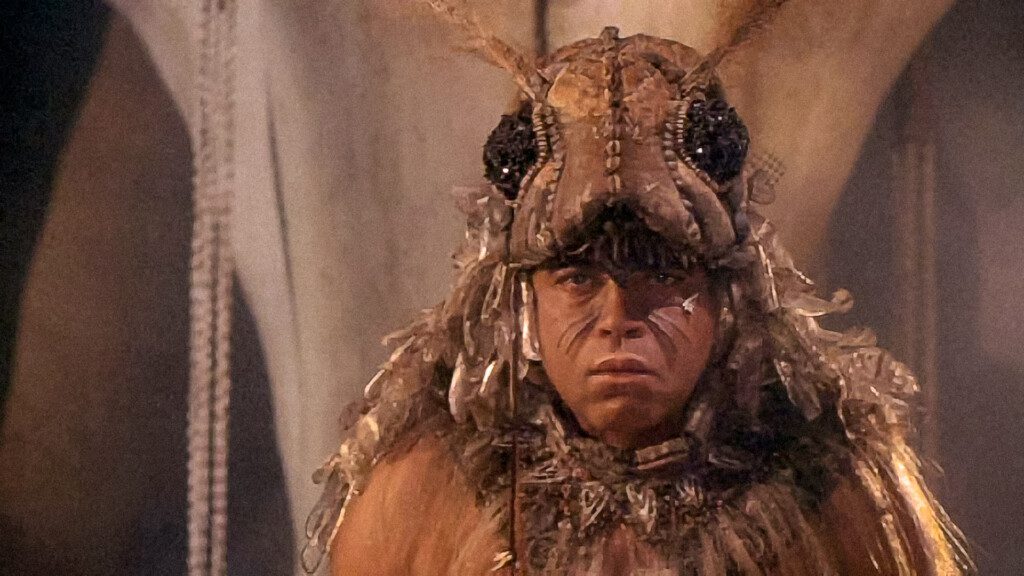“Those bad dreams are still inside you.”
The Exorcist never needed a sequel, and it was always going to get one. William Friedkin’s film was too successful and too influential – it was nominated for Best Picture, which shows you how cool the Academy used to be – to let it stand alone when there was money to be made. But how do you follow up such a perfect ending? The Exorcist ended perfectly: the story concluded but there was enough left tantalizingly unexplained that a sequel was conceivable (the book’s author, William Peter Blatty, agreed, and published Legion in 1983). But what would a sequel actually look like? The answer, unfortunately, is Exorcist II: The Heretic, a movie that can only be described as chaotic and insane (but not in the good, Halloween III: Season of the Witch way).
The Heretic consists of two diverging storylines, which don’t so much dovetail as smash together like a kid playing with action figures. In one story, Father Philip Lamont (Richard Burton), fresh off of a failed exorcism, is tasked with investigating the death of Lankester Merrin, as the Catholic church is close to branding him a heretic and denying the existence of Satan altogether. Elsewhere, we catch up with a now-grown Regan, who lives in a frankly unbelievable apartment with her guardian, Sharon. It’s unclear what, if anything, Regan does for work; we see her at rehearsal for a tap revue, but the production is so rinky-dink that there’s no way it pays a living wage, let alone the kind of wage that would allow her to live in this futuristic Jetsons home. (Perhaps her mother pays for it; Ellen Burstyn is not seen in this film, which goes to great, sweaty lengths to justify her absence, and does so repeatedly.)

Regan attends therapy with Dr. Gene Tuskin (Louise Fletcher, cashing a check) who insists that Regan is repressing memories. (Why Dr. Tuskin’s name is spelled as the male Gene and not the female Jean is never explained.) Lamont’s investigation inevitably brings him into Regan’s orbit, but Tuskin won’t let him interrogate Regan. Instead they, and the film, take a hard swerve into sci-fi territory. Regan and Tuskin hook themselves up to a device called the synchronizer, which allows users to, you guessed it, synchronize their brainwaves; in short, Tuskin will see what Regan pictures. I hope you like the synchronizer, because you’re going to get a lot of it.
So right away we’re dealing with a truly bizarre storytelling conceit, made worse by the fact that, with the exception of one scene, what Regan envisions is not actually depicted. So if you want to watch Linda Blair and Louise Fletcher stare at each other, have I got the movie for you. And because Regan and Tuskin are in a trance-like state when synched up, the performances are, by necessity, flat and monotone. So it’s uninteresting visually as well as narratively. Nevertheless, Lamont calls the synchronizer miraculous and in short order is allowed to synch with Regan. (The Heretic feints at an attraction, or at least an affection, between Tuskin and Lamont, but Burton and Fletcher might as well be in two completely separate movies for their approaches to the material.)
If a movie can’t be good, it should at least be interesting, which The Heretic almost achieves. Almost. The middle third follows Lamont to Africa; a vision of Merrin’s leads him on a search for a man named Kukumo, who supposedly has the power to fight the Abyssinian demon Pazuzu. (In a hilariously telling scene, Lamont envisions a young African boy snarling, “I am Pazuzu.” Literally the main thing about demons that everyone knows is that their power lies in their secret names, which are usually pried out of them by force during an exorcism. Sometimes it’s pretty obvious that the screenwriter, William Goodhart, mostly wrote comedic plays.) I’ll admit that the CGI, while dated, has a bit of charm, and seeing James Earl Jones as Kukumo, dressed in a cleric’s robe made to resemble a locust, is crazy enough to work on me.

But that’s not enough to save the rest of the film. Where The Exorcist showed, The Heretic tells, and if you’re worried that a lot of Pazuzu backstory and newfound psychic powers for Regan won’t help the story and will in fact hinder it significantly, well, great job at thinking. The problem, ultimately, is that there’s too much going on in a film that frankly shouldn’t exist. The climax – which takes place at the Georgetown mansion of the first film, for maximum fan service – is a lot of sound and fury, and like the rest of that Shakespeare quote, it signifies nothing. Max von Sydow shows up in both flashback and spirit form, and even though it’s always a treat to see von Sydow, we don’t exactly relish the idea of more of Father Lamont, whom Merrin tasks with watching over Regan.
There is nothing good I can say about this movie that won’t be cancelled out by ten bad things I could say. At its core, Exorcist II: The Heretic is a witless cash grab, a thoroughly unnecessary brand extension before that was even a concept in Hollywood. This was lambasted not only by critics and the public, but by the creators of The Exorcist, William Peter Blatty and William Friedkin. It’s popular to take a revisionist take on reviled properties (such as the above-mentioned Halloween III, which has enjoyed a bit of a renaissance), but sometimes things are just bad. Batman Forever sucks. The Phantom Menace sucks. Everyone hated Exorcist II when it came out, and when you watch the film you’ll have no choice but to agree.

